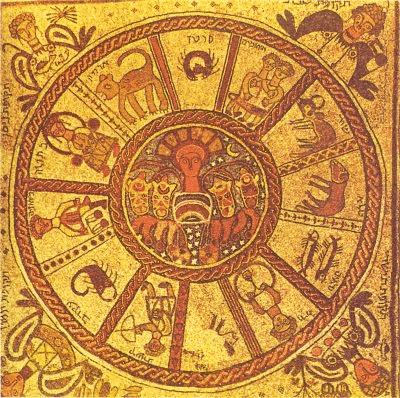
Some scholars have claimed that the Babylonians invented the zodiac of 360 degrees around 700 BCE, perhaps even earlier. Many claim that India received the knowledge of the zodiac from Babylonia or even later from Greece. However, as old as the Rig Veda, the oldest Vedic text, there are clear references to a chakra or wheel of 360 spokes placed in the sky. The number 360 and its related numbers like 12, 24, 36, 48, 60, 72, 108, 432 and 720 occur commonly in Vedic symbolism. It is in the hymns of the great Rishi Dirghatamas (RV I.140 - 164) that we have the clearest such references. Dirghatamas is one of the most famous Rig Vedic Rishis. He was the reputed purohit or chief priest of King Bharata (Aitareya Brahmana VIII.23), one of the earliest kings of the land, from which India as Bharata (the traditional name of the country) was named. Dirghatamas was one of the Angirasa Rishis, the oldest of the Rishi families, and regarded as brother to the Rishi Bharadvaja, who is the seer of the sixth book of the Rig Veda. Dirghatamas is also the chief predecessor of the Gotama family of Rishis that includes Kakshivan, Gotama, Nodhas and Vamadeva (seer of the fourth book of the Rig Veda), who along with Dirghatamas account for almost 150 of the 1000 hymns of the Rig Veda. His own verses occur frequently in many Vedic texts, a few even in the Upanishads. The hymns of Dirghatamas speak clearly of a zodiac of 360 degrees, divided in various ways, including by three, six and twelve, as well as related numbers of five and seven. We must remember that the zodiac is first of all a mathematical division of the heavens such as this hymn outlines. This is defined mainly according to the elements, qualities and planetary rulerships of the twelve signs. The symbols we ascribe to these twelve divisions is a different factor that can vary to some degree. The actual stars making up the constellation that goes along with the sign is yet a third factor. For example, some constellations are less or more than thirty degrees, but the mathematical or harmonic division of each sign will only be thirty degrees. What is important about the hymns of Dirghatamas is that he shows the mathematical basis of such harmonic divisions of a zodiac of 360 degrees. For Dirghatamas, as was the case for much of later Vedic astronomy, the main God of the zodiac is Vishnu. Vishnu rules over the highest heaven and is sometimes identified with the pole star or polar point, which in the unique view of Vedic astronomy is the central point that governs all celestial motions and form which these are calculated.





